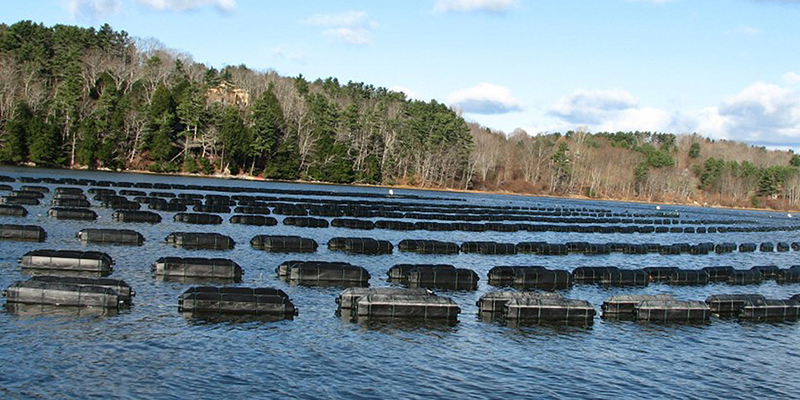Consumers have acquired a taste for Maine oysters, and their growers have been all too happy to keep up with demand.
“What we hear from buyers is that they can sell whatever farmers have,” said Nick Battista, the marine programs director at the Island Institute in Rockland, Maine.
According to figures from the Maine Department of Natural Resources, state oyster farmers sold 2.13 million pounds of oysters worth $5.05 million in 2016, besting the previous year’s haul of 1.79 million pounds worth $4.37 million and shattering 2014 numbers that saw 1.18 million oysters harvested for just $3.07 million. And the good news is the demand is just starting to pick up.
“People are definitely becoming more interested in oysters,” said Battista, who runs educational programs for anyone interested in getting started in oyster farming. “It has a lot to do with changing palettes. With each different farm there’s different water conditions, and that means different flavors. It’s fun for people to try half a dozen oysters all from different farms at raw bars that are popping up.”
"According to the annual EPA reports, Maine has some of the highest water quality in the country" said Sebastian Belle, executive director of the Maine Aquaculture Association. "That, combined with lower water temperature and a productive phytoplankton ecosystem, means that our oysters tend to have a higher glycogen content and condition factor. To the consumer, that means a sweet, creamy oyster that tastes outstanding. To the chef, it means a high quality product with a longer shelf life than products that have traveled far or come out of warmer waters."
Interest in farming oysters is growing as fishermen look to supplement income lost from the shuttered shrimp fishery, restricted groundfish fishery and the lobster off-season. Older fishermen are also looking to oysters as a way to stay on the water.
"Oyster farming is proving to be a great way for working waterfront families to diversify their economic base and continue their family maritime heritage," said Belle. "Many of the newer farmers are either commercial fishermen or their sons and daughters."
Average wholesale price for oysters ranges from 60 to 80 cents apiece.
At the start of 2016, Maine marine resources had leased 180 limited-purpose aquaculture permits for 400 square feet, of which farmers can own up to four. Now the department is pushing 350 permits.







